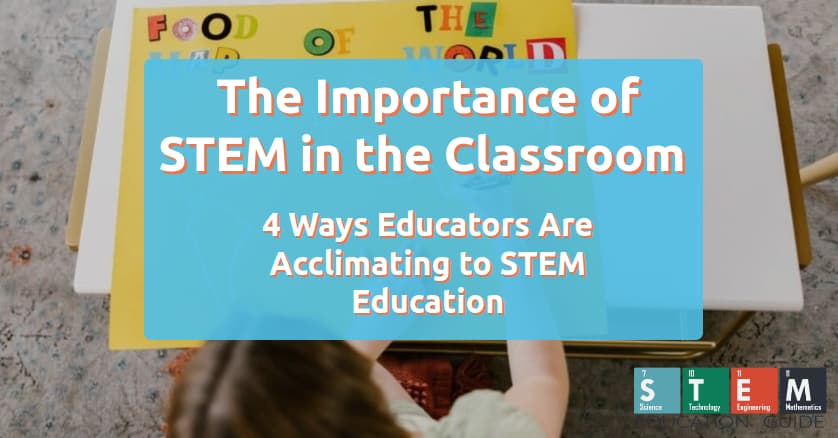If there is one area of education that is filled with accusations of being inadequate in the US, it would be STEM.
It is commonly thought of as being at the helm of innovation and deciding whether a country will succeed in the future.
In this article, we will go through some of the problems it faces and why it should not be put on as much of a pedestal as it currently is.
Let’s start by looking at some data. In this list of the 16 fastest-growing industries of the future, 14 of them are STEM-related. Literally, all the top 25 college degrees by pay and demand are related to STEM subjects.
There has been a 79% increase in STEM occupations since 1990. It can be quickly concluded that STEM degrees are the most in-demand degrees in America.
Table of Contents
Quality of STEM Education in Schools

One of the essential abilities that a student should have after a STEM education is the ability to think. Not just to think but to think technically to solve problems.
This is often termed critical thinking or the way scientists think, leading them to make discoveries.
One of the many problems that STEM education faces is the fact that students are not taught to think like a scientist from a young age.
Many college professors mention that their students were not taught how to think, and the students memorized all through high school.
The fact that students can memorize the textbooks and then get good enough grades to get into STEM programs in college suggests that the curriculum is lacking in keeping up with the way students should think.
The teachers should be willing to put in the effort to help nurture their students correctly.
It seems evident that nursing would clearly encapsulate STEM, yet even those who work in the field argue as to whether they are employed in a STEM field or not. In our article, is nursing STEM? We answer all your questions.
Children’s Interest in STEM is Waning
Research has suggested that children lose interest in science by the time they are 12-13 years of age.
This is mostly attributed to the classes not appearing relatable to the real world.
What children learn in the classroom has no value outside of the classroom, nor does it help them understand their immediate environment better.
What does Newton’s Laws have to do with writing with a pencil on paper? A lot, actually, but science is not taught in that sense.
It is taught in a string of numbers, word problems, and formulas. In word problems, you skim the problem for numbers, then plop the numbers in the formula and magically get the answer.
The way that science should be taught to children needs to be changed so that more children get the opportunity to discover their love for science and problem-solving.
Attitude of Young People Towards Stem Degrees

It has also been pointed out that young people think that STEM degrees are too hard and that only a few industries hire them.
In reality, almost all industries need a branch of STEM to conduct Research and Development work and maintain existing technology.
Pace of Innovation in STEM Education
One of the main issues raised is that STEM education does not progress fast enough for them to produce graduates suitable for the labor market.
For STEM education to keep pace, it must be updated almost every year.
We go hands-on with the best STEM books for teachers. See what books made the list!
The Need for New Thinkers in STEM

Most of the critical problems faced by the world in the past and almost all of the issues facing the world today require a STEM-based solution.
The problems that the world is facing today include food shortages, the pandemic, currently incurable diseases (which, according to Dr. David Sinclair also include death), renewable energy, and many more.
Problems are never-ending in this world, and you always need newer technologies and newer techniques to solve new problems. STEM-based solutions have proven to solve those problems once and for all, so there is a dire need for new thinkers in this space.
Is STEM the Solution to All Problems?
Although STEM subjects get a lot of attention when it comes to world-changing innovation, they are just responsible for the physical manifestation of innovation.
There are many things that go into innovation that are not related to STEM. There are social sciences and understanding the people’s needs and wants to give the masses exactly what they need at the moment.
Apple Co-Founder Steve Jobs had this to say about innovation, “It’s in Apple’s DNA that technology alone is not enough — that it’s technology married with liberal arts, married with the humanities, that yields us the result that makes our hearts sing.”
The problem with American society is that it considers STEM education to be above everything else, but in reality, it is everything in unison that creates the difference that we see in the world.
Wrapping Up
STEM workers are some of the most essential workers in society, and they solve many of the problems plaguing human beings. The education sector should be focused on improving science education since most children lose interest in science which then leads to an undersupply of talent in the STEM field.
Engineering and science fields change every year, so the curriculum that schools use to teach science subjects should also be constantly improved so that the talents they produce can immediately start being productive in the labor market.
Students that currently graduate from high schools are not taught how to think critically, or how to solve problems the scientific way. This suggests that the current methods of teaching in the levels of high school and below are not effective.
Most of the problems we currently face need STEM-based solutions, and there is a demand for new thinkers in this field. The demand for talent does not meet the supply.
Finally, in contrast to everything that has been said, innovation is not entirely due to STEM industries. Many factors, including liberal arts, humanities, and social sciences, contribute equally to new innovative products we see and use daily.
It’s no secret that today’s earliest primary grade education maintains some of the staples of classrooms over the years. In our article, we discussed The Importance of STEM in the Classroom: 4 Ways Educators Are Acclimating to STEM Education.











